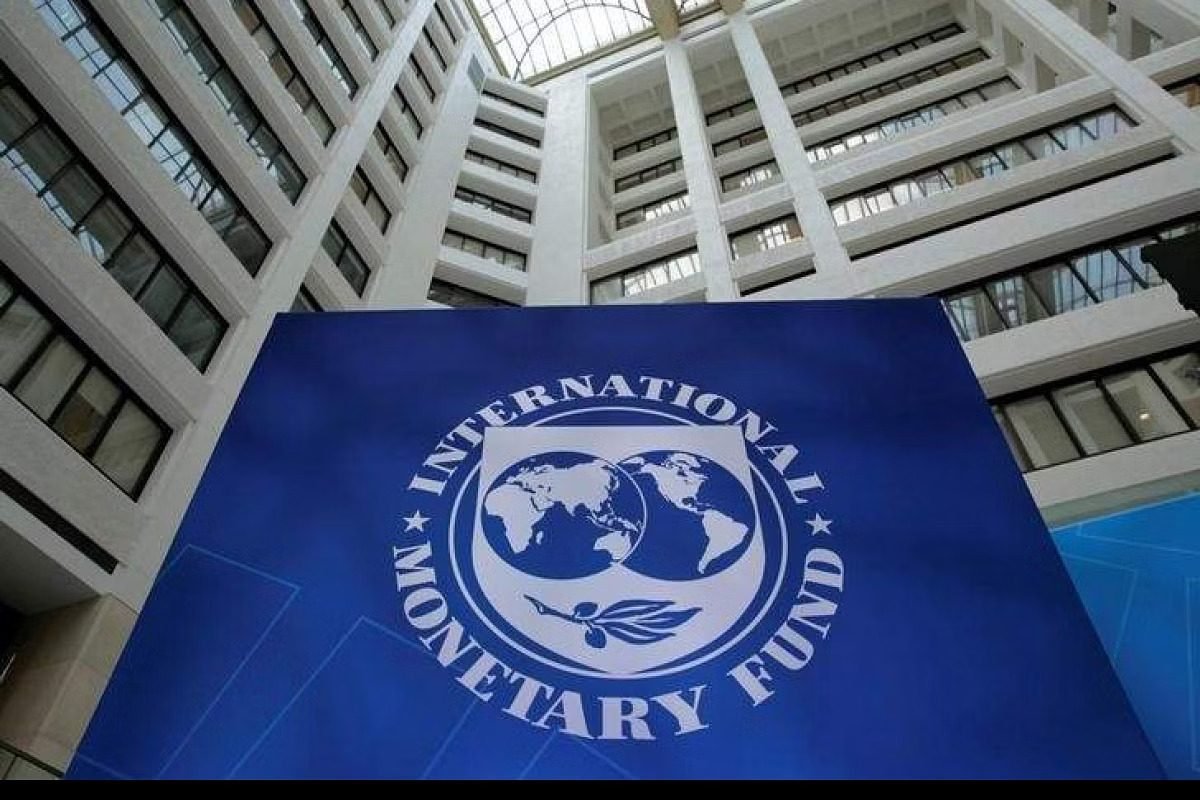Date- June 08, 2023
Place- New Delhi, India
USDINR
All eyes are fixed on the Reserve Bank of India (RBI) as the highly anticipated monetary policy decision approaches. The financial world is abuzz with speculation about the central bank’s stance and the future trajectory of its policies. With expectations leaning towards a steady repo rate at 6.50%, the pivotal question on everyone’s minds is whether the RBI will shift from its hawkish position to a more neutral one. This potential adjustment has the power to ignite significant volatility across the bond, currency, and equity markets. Meanwhile, market participants are also closely watching for measures aimed at absorbing excess liquidity in the banking system.
The Tug of Sentiment:
The prevailing market sentiment hangs in the balance, waiting for the RBI’s policy stance to be unveiled. A shift towards a neutral position would mark a departure from the bank’s previously hawkish stance. Such a change could have far-reaching implications, impacting the emotions and decisions of bondholders, currency traders, and equity investors alike. Consequently, volatility levels across these markets might intensify, creating a captivating atmosphere for all involved.
The Quest for Liquidity:
Efforts to reduce liquidity through short-term Variable Rate Reverse Repo (VRRR) auctions have fallen short of expectations. However, market participants eagerly anticipate any announcements regarding overnight VRRR operations. Should this measure be implemented, it could offer temporary relief by boosting the near-term forward premium in USD INR. Yet, its impact on the spot market is expected to be minimal. Instead, a more substantial ripple effect might be triggered by the introduction of a sell-buy swap strategy. The RBI’s strategy of selling USDINR in the spot market and repurchasing it through forward contracts can exert downward pressure on the spot rate and create higher premiums in the forward market, potentially causing notable changes in the USDINR exchange rate.
The Dance of Boundaries:
At present, USDINR seems to be caught in a dance within a range-bound pattern. Support levels have been identified at 82.45 and 82.25 on the spot market, while resistance is expected to emerge near the 82.70 and 82.80/85 levels. Traders employing a scalping strategy may find counter-trend trades appealing, particularly when observing movements exceeding 20/25 paise in either direction. However, caution is advised with appropriate stop-loss orders. For option sellers, considering reduced price fluctuations, short straddles, and strangles might be worth exploring following the RBI policy announcement.
EURINR
In a bold move, the US Treasury has set its sights on achieving a cash balance of approximately $425 billion at the Federal Reserve by the end of June. This announcement has captured the market’s attention, igniting curiosity and raising concerns about the potential ramifications. The Treasury plans to inject a substantial $350 billion into the Treasury General Account (TGA) within a relatively short period. Naturally, this sparks questions about the impact on US Treasury prices, currencies, and the overall risk environment.
Fed’s Watchful Eye and Lessons from the Past
The US Federal Reserve, having learned from past experiences, is keeping a vigilant eye on the unfolding situation. The repo rate spike witnessed in September 2019 serves as a powerful reminder of the potential risks associated with large-scale monetary operations. With that in mind, the Federal Reserve is determined to avoid a repeat occurrence. As a result, they are expected to closely monitor the developments, ensuring stability and preventing any undesirable market disruptions.
EURINR: Riding the Rangebound Wave
Amidst this dynamic backdrop, the US Dollar Index, along with the EURUSD and EURINR, finds itself navigating a rangebound journey. Trapped within a defined range, EURINR June futures are projected to trade between 88.20 and 89.00 in the short term. For astute traders seeking opportunities, two strategies stand out. One approach involves buying near 89.20 and setting a stop below 89.00 to manage risk effectively. Conversely, another strategy suggests shorting near 89.00, with a stop above 89.20. This way, traders can ride the waves of the market while closely monitoring every twist and turn that comes their way.
JPYINR
Within the realm of currency markets, an intriguing interplay takes place among JPYINR, USDINR, and USDJPY. These three currency pairs, each wielding its own influence, create a captivating environment for traders and market enthusiasts alike. The current situation reveals an interesting picture of mild upward drift for JPYINR, leaving us hungry for further insights.
JPYINR’s Range: An Intriguing Realm of Limits
JPYINR, like a skilled acrobat, gracefully enters the realm of ranges. It has chosen the boundaries of 58.50 to 59.50 as its arena, where it deftly maneuvers between support and resistance levels. As the Japanese yen dances with the Indian rupee, traders find themselves in a captivating spectacle, eagerly awaiting the next move.
Seeking Clues in USDJPY and USDINR
Amidst this captivating dance, two key players, USDJPY and USDINR, hold important clues that may shed light on JPYINR’s journey. USDJPY, with its rangebound demeanor, oscillates steadily between 138.40 and 141.00, teasing traders with the possibility of a breakout. On the other hand, USDINR grapples with the challenge of showcasing strong momentum, leaving market participants hungry for a clear direction.
Monitoring for Breakout Opportunities
In this intricate web of currency dynamics, market participants must remain vigilant, their eyes fixed on the movements of JPYINR, USDINR, and USDJPY. The lack of clear direction in these currency pairs presents an opportunity, a moment of anticipation for potential breakout possibilities. Traders and enthusiasts alike should closely monitor the intricate patterns and fluctuations, poised to seize the moment when these currencies reveal their true intentions.
GBPINR
In the world of GBPINR, a tale of resilience unfolds. Thrice it rebounded from the depths of 102.40, showcasing its determination to overcome obstacles. However, as it approached the heights of 103.00/103.30, formidable resistance emerged, creating a thrilling battleground for traders and enthusiasts alike.
The BoE’s Rate Hike Expectations and Economic Realities
Amidst this battle, the market holds high expectations for the Bank of England (BoE) to raise rates by 75 basis points within the year. Such anticipation fuels the GBPUSD’s strength, adding to the fervor surrounding GBPINR. However, the landscape is not without challenges. Economic slowdown, particularly in the housing sector, looms as a potential hurdle that could dampen the path ahead. The clash between these expectations and the realities of the economy adds an intriguing element to GBPINR’s journey.
Support and Buying Opportunities: Monitoring Key Levels
In this tumultuous landscape, support becomes a crucial element. GBPUSD finds solid ground at 1.2300/1.2360, providing a foundation for further moves. Similarly, GBPINR boasts strong support at 102.00/102.40, presenting enticing buying opportunities for astute swing traders seeking to capitalize on market fluctuations. As GBPINR navigates its path, closely monitoring these key support levels becomes paramount.
The GBPUSD Connection: A Key to GBPINR’s Future
The intertwining of GBPUSD and GBPINR cannot be overlooked. Their connection serves as a compass, guiding traders and enthusiasts toward understanding GBPINR’s future direction. As GBPUSD develops and evolves, it holds invaluable clues about the path GBPINR is likely to take. Thus, market participants should keep a watchful eye on GBPUSD’s movements, utilizing it as a powerful tool to navigate GBPINR’s journey.
Disclaimer: CurrencyVeda is an information provider that aims to educate individuals about currency markets and related topics. The information provided on CurrencyVeda’s platform is for educational purposes only and should not be considered as financial or investment advice. We do not endorse or guarantee the accuracy, completeness, or reliability of any information or analysis provided. Trading in currency markets involves inherent risks, and individuals should consult with a qualified financial advisor before making any investment decisions. CurrencyVeda shall not be held liable for any financial losses or damages incurred as a result of relying on the information provided on its platform.





